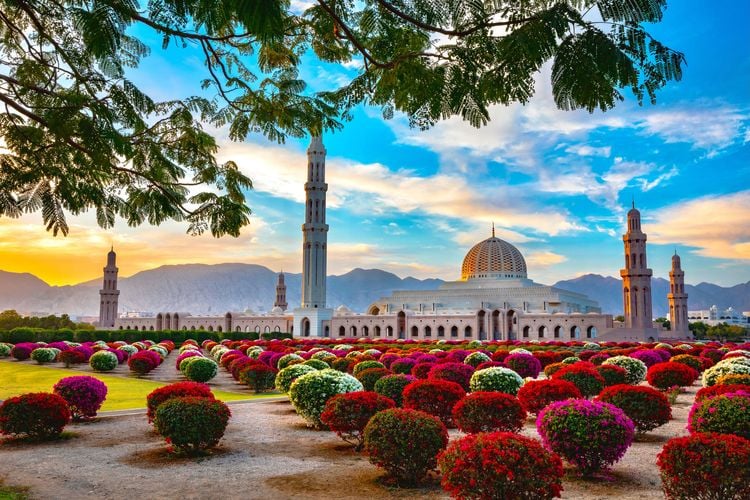The port, souk and fish market are located in the Muttrah district. It's easy to walk around this area, as the distances involved are not very great. Don't hesitate to come to Muttrah early in the morning to watch the fishermen remove the fish from the nets. You can then stroll along the corniche. Offshore, the contrast between the traditional fishermen's dhows and the two mega-yachts owned by Sultan Qaboos is striking!
Nestling in a magnificent setting, between the sea and the mountains, Muscat captivates visitors with its gentle way of life and authenticity. In the space of thirty years, Muscat has undergone unprecedented development. The capital of the Sultanate, whose name means "place of anchorage", has gone from being a small maritime town to a modern city, while retaining its culture and traditions. Unlike neighbouring cities such as Dubai and Abu Dhabi, the skyscrapers are nowhere to be seen, but there is no shortage of gardens!
Muscat regularly wins awards for being the cleanest city in the world, and one of the safest too. In short, an ideal destination, especially for families travelling with children! From the Muttrah souk to the Grand Mosque, via the Opera House and museums, here is our selection of Muscat's must-sees.
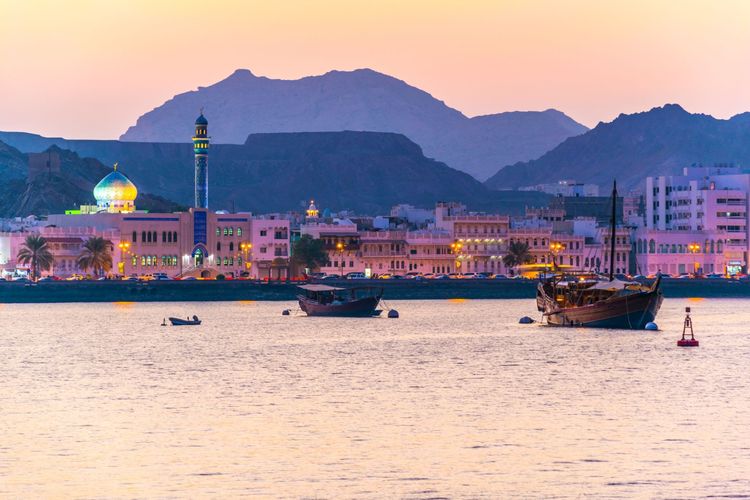
View of the Muttrah coastline at dusk
- © trabantos / ShutterstockThe Muttrah district
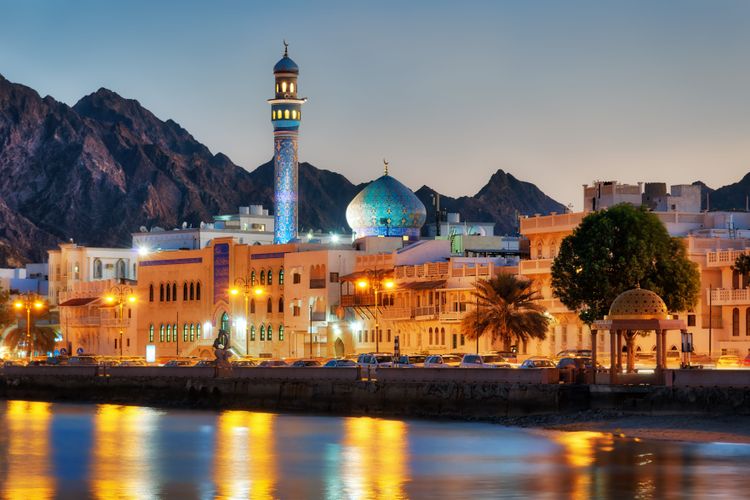
The corniche at dusk
- © Lukas Bischoff Photograph / ShutterstockSet in a covered but airy alleyway, the souk brings together a myriad of small shops selling incense, floral waters, scented wood powders, silver jewellery, traditional coffee sets, khanjars (curved-blade daggers) and a variety of fabrics. Please note that it closes from midday to 4pm.
Old Muscat and its museums
If you continue along the sea, you will reach old Muscat, whose port is guarded by two forts built by the Portuguese in the 16th century (Fort Al Jalali and Fort Al Mirani). At the rear is the palace of Sultan Qaboos. Old Muscat is home to a number of interesting museums.
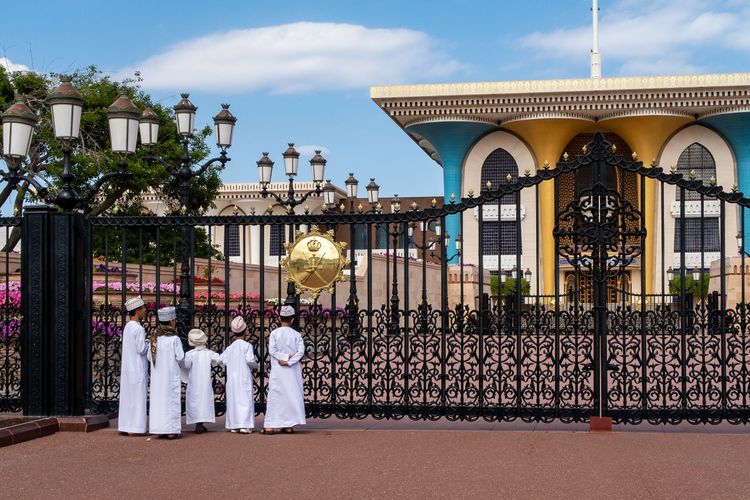
In front of the colourful Al-Alam palace in old Muscat
- © Aleksandra Tokarz / ShutterstockIn a flower-filled alleyway, the pretty Bait Al Zubair museum (bait means house in Arabic), dedicated to crafts and popular traditions, houses collections of traditional objects and a reconstruction of a typical village. Its garden is home to a falaj, an ingenious ancestral irrigation system listed as a World Heritage Site by UNESCO. The Bait Al Oud annex exhibits old maps, engravings and moving black and white photos.
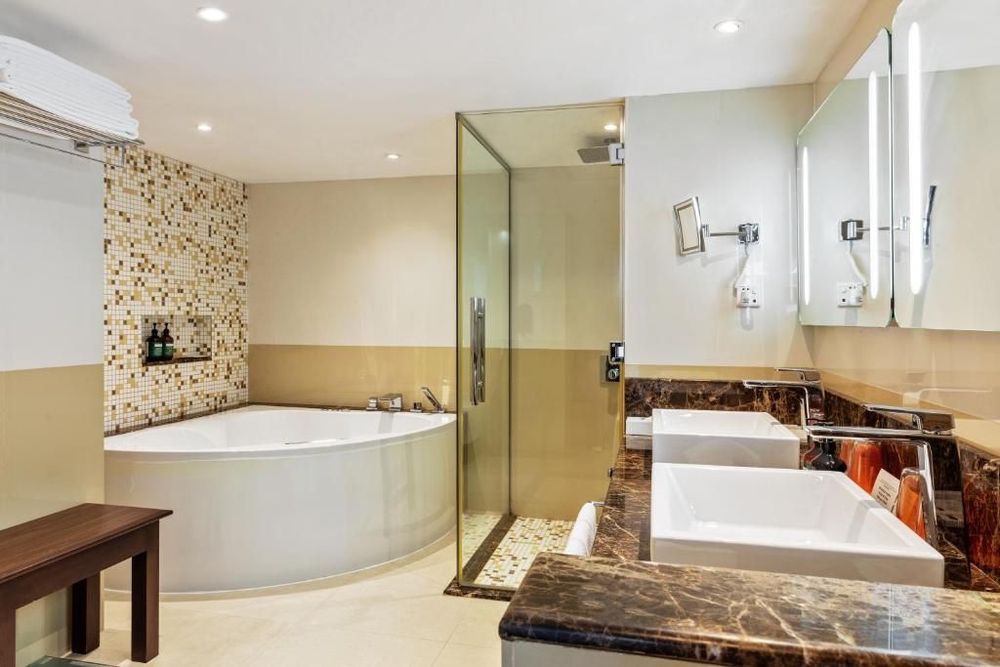 Oman
Oman
Crowne Plaza Muscat, an IHG Hotel
You'll be staying in a luxurious establishment!Inaugurated by François Mitterrand in 1992, the Musée franco-omanais (Bait Faransa Museum), located in the former residence of the French Consuls, traces the history of relations between the two countries back to the 18th century, when Louis XIV took an interest in the destination. This residence is also remarkable for its architecture.

National Museum of Oman
- © Sun_Shine / ShutterstockLocated opposite the Al Alam Royal Palace, the National Museum of Oman traces the country's history and traditions, with over 7,000 exhibits. This immense museum houses twelve themed galleries, from the prehistoric period to the heyday of its Empire, which extended as far as Baluchistan and Zanzibar, and to its Renaissance since the accession to power of Sultan Qaboos. Pottery, jewellery, studded chests, precious furniture, maritime accessories: the modern, educational scenography of this luminous showcase is a great success.
The Great Mosque of Sultan Qaboos
The imposing and luxurious Sultan Qaboos Grand Mosque, surrounded by five minarets in reference to the five pillars of Islam, is quite simply grandiose. It features elements of Omani, Indian, Iranian, Mongolian, Turkish and Moroccan architecture. This monumental place of prayer can accommodate up to 20,000 worshippers!
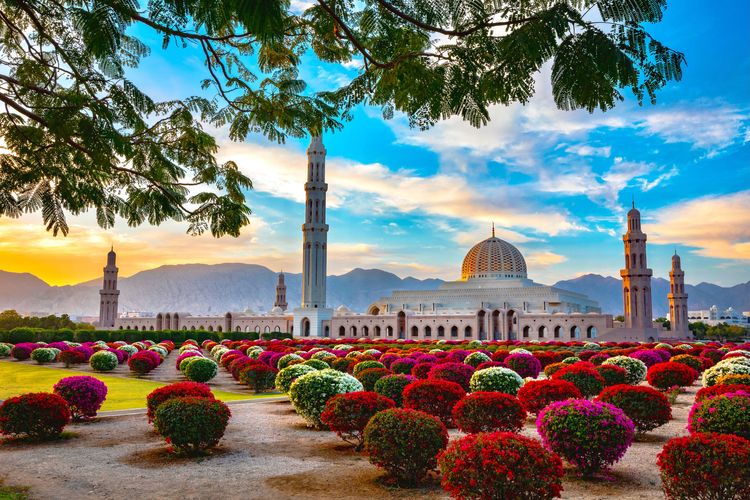
Sultan Qaboos Grand Mosque at sunrise
- © Djay7 / ShutterstockIn the men's prayer room, the Austrian Swarovski crystal chandelier, suspended from the 50-metre-high central dome, weighs 8 tonnes and is 14 metres long! It is the second largest chandelier in the world (after the one in Abu Dhabi), set in 24-carat gold.
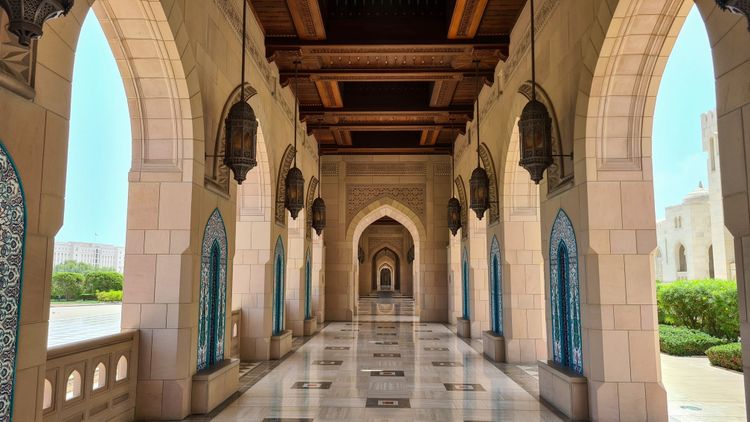
Exterior porches of the mosque
- © Besides the Obvious / ShutterstockThe majestic dome and the lavish decoration leave no one indifferent! The Italian marble floor is covered with a carpet made in Iran, a unique piece weighing 35 tonnes and created by 600 women: 28 colours were used over an area of 4,263 m² (60 x 70 metres), the second largest floor carpet in the world (again, after the one in Abu Dhabi)! At night, the illuminations are a particular highlight. It's one of the few mosques in the world open to non-Muslims, so make the most of it!
Practical information
The mosque is open every day from 8am to 11am, except Fridays. Admission is free. Legs and arms must be covered, as well as hair for women. It is possible for non-Muslims to enter the prayer rooms, provided they remove their shoes of course.
The Royal Opera House Muscat
Muscat's Royal Opera House is a highly cultural venue, the only one of its kind on the Arabian Peninsula, offering a programme of internationally renowned performances. The season runs from the beginning of September to the end of May. One is struck by the cleanliness of the premises, bathed in a pleasant smell of incense. The Italian marble floor, the very high ceiling adorned with Burmese teak wood coffers and the Swarovski crystal chandelier make for a dazzling setting!

The Royal Opera House in Muscat
- © elesi / ShutterstockBefore entering the auditorium, which can seat 1,100 people, you pass through acoustic chambers. Each seat is equipped with an individual screen that translates the opera into English, Arabic and the language of the work being performed (French, Italian or German). One floor is reserved for VIPs. The opera house displays many musical instruments donated by France, Germany and Italy, including violins and trumpets. You can also admire the world's largest organ, originally from Germany.
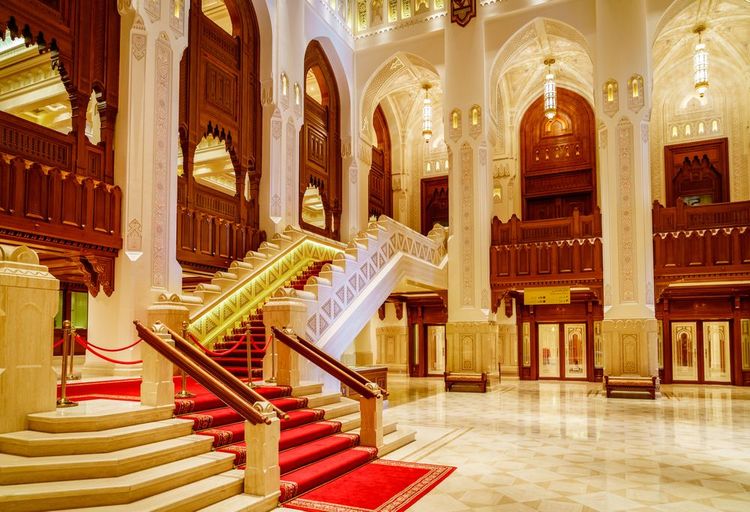
Interior view of the Royal Opera House
- © Alexey Stiop / ShutterstockThe Opera House also houses the House of Musical Arts, a music library, a cultural centre and conference and exhibition spaces. Open-air concerts are held in the Maïdan, a vast courtyard lined with a series of pointed-arch galleries, all dressed in white and typical of Omani architecture. The programme during the arts and music season, from September to May, includes opera and classical ballet, jazz, tango, world music, baroque recitals, modern dance, etc.
Programming and ticket sales online on the official website of the Royal Opera House Muscat.
